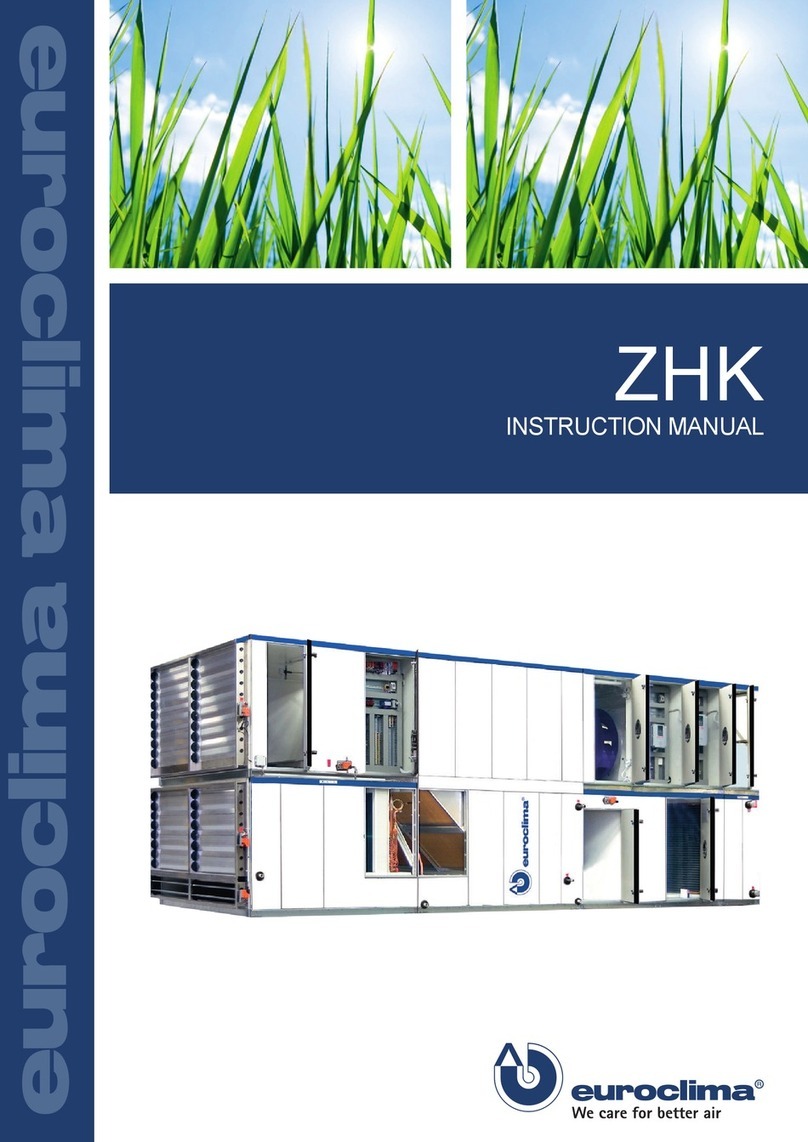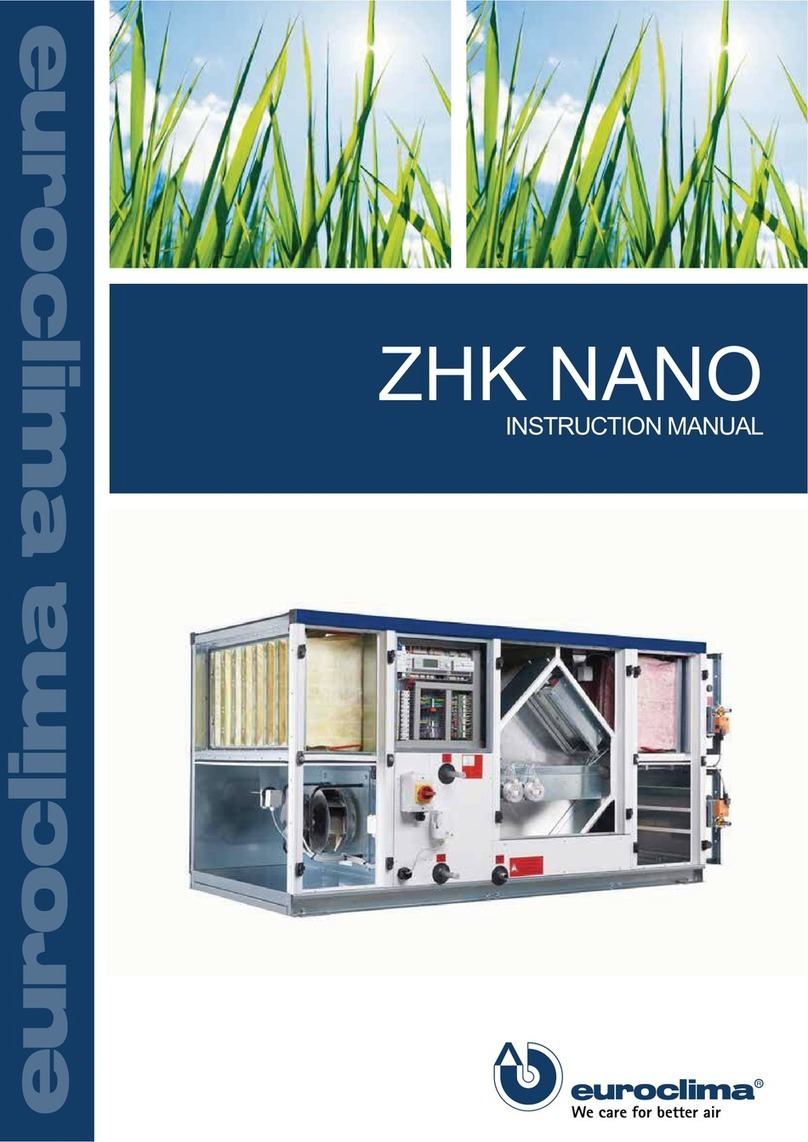instruction manual ZHK 2000 / T-TWO / INOVA / ETA
V01-16
11/113
Risk of thin sheets, when working on AHU
During work on AHU (or on parts), there is a substantial risk of cutting with thin
sheets as e.g. roof sheets, fins of heat exchangers, corners and edges - Use per-
sonal protective equipment: wear protective helmet, gloves, safety shoes and long
protective clothing.
Lighting
For work on AHU (maintenance and inspection work) is to provide adequate lighting.
Firefighting in case of fire
In general, the local fire protection regulations must be observed.
-If the AHU is part of the smoke extraction concept, then the specifications
of this concept have to be observed.
-
Otherwise, the power supply of the AHU must be interrupted immediately
at all conductors. In addition, the dampers must be closed to consequently
prevent oxygen supply and fire spread.
Exposure to harmful substances in case of fire
In case of fire, some materials can produce noxious substances. In addition,
harmful vapours can escape from the unit. Therefore, severe respiratory protec-
tive equipment is required and the danger zone has to be avoided.
Exposure to rotating parts / hot surfaces / electrocution
When working on AHU note the following risks:
Indentation of body parts in moving parts (belt drive, fan impeller, ...).
Burns and scalds on hot AHU components such as heat registers, heat exchang-
ers, ...
Electrocution on current-carrying parts such as electric motors, frequency convert-
ers, electric heaters, control cabinets, interior lighting etc.
Therefore must be ensured prior working on the unit, that…
-all current-carrying parts, such as fan motors, valves, motors and electric heaters are discon-
nected from the power supply by using the repair switch (emergency stop) and that the switch
is locked in position 'off' in order to effectively prevent a re-activation during the work.
-the housing of the AHU interior lighting (can have separate supply) is not current-carrying.
-all moving parts, especially fan wheel, motor and heat wheel have come to a standstill; wait at
least 2 minutes after switching off before opening the doors.





























